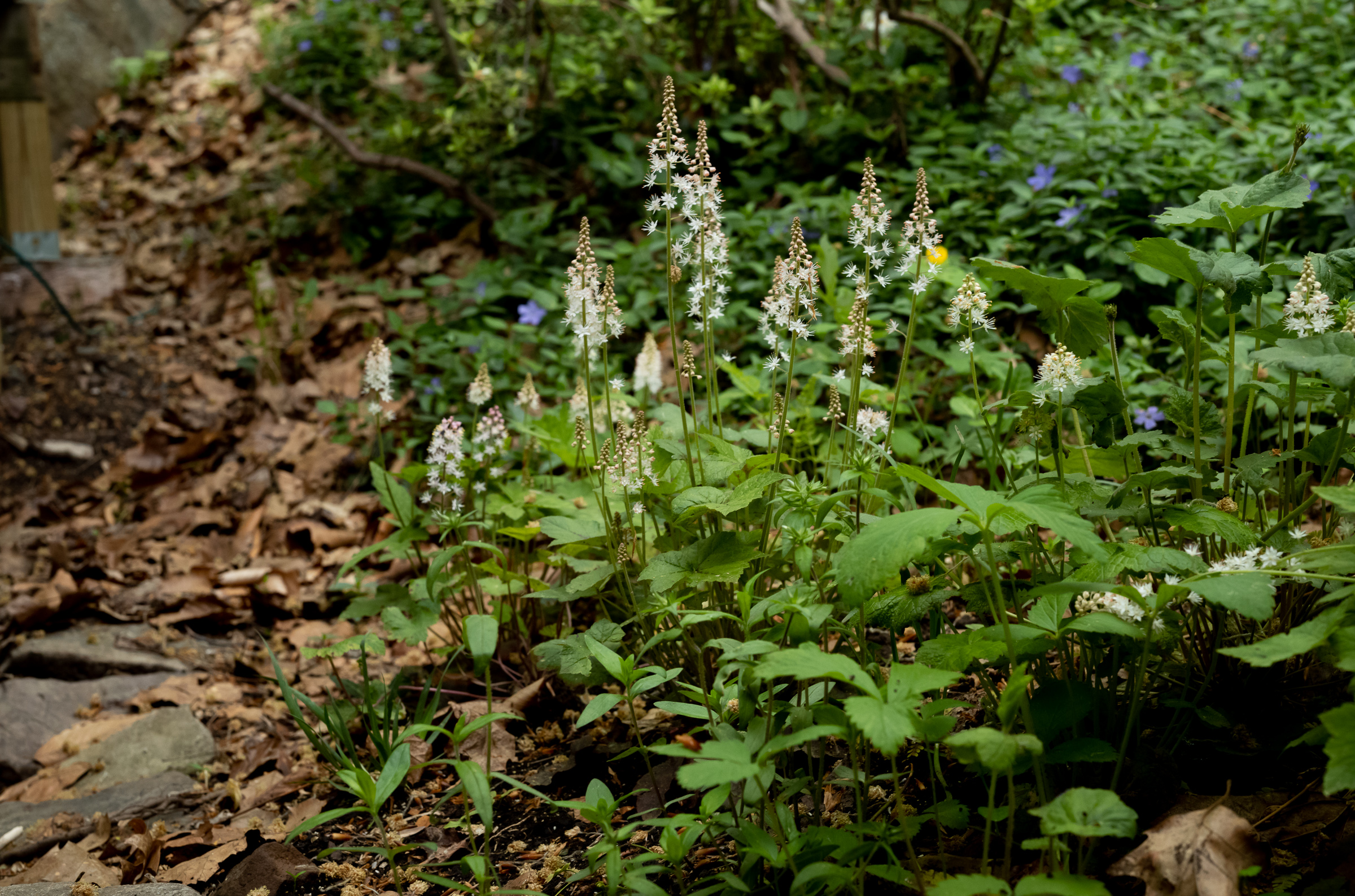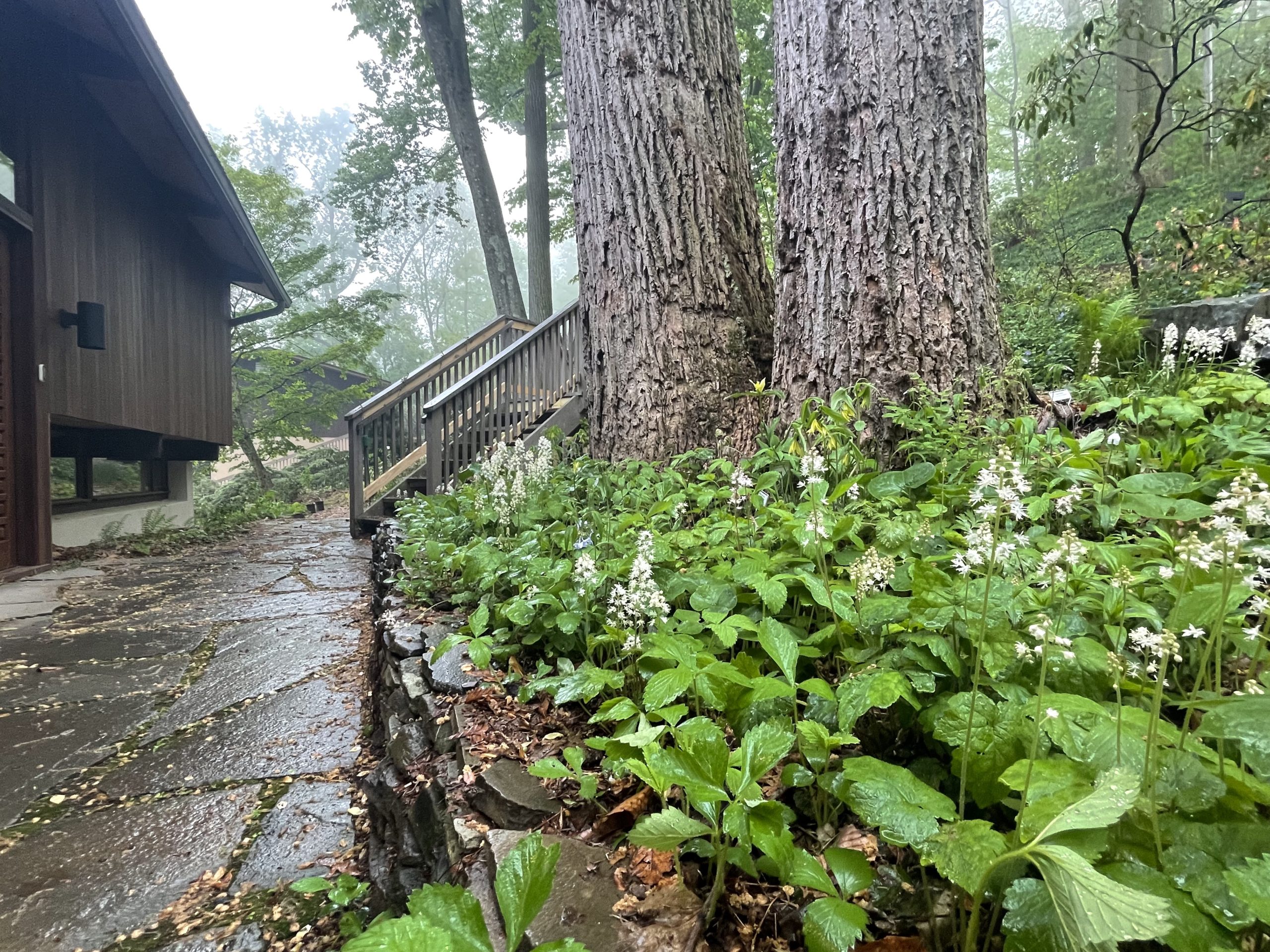
I am honored to be hosting my first garden tour from 9am to 3pm on Friday, May 7 and Saturday, May 8 at my house (and now Saturday, May 15 from 10 to 2), 265 Highland Avenue in Montclair, New Jersey as one of two tours held by the Essex County chapter of the New Jersey Native Plant Society (more at the society’s site here). As chronicled on this blog, the landscape is a work in progress, begun in earnest only three years ago. It is far from done (whatever that means in gardening), but I have bold ambitions to make it a place that people can come to and see what a native garden can be like. It has been raining today, but because this is a garden designed for all weather and all seasons, I thought photographing it in the rain would be an effective way to convey that message.
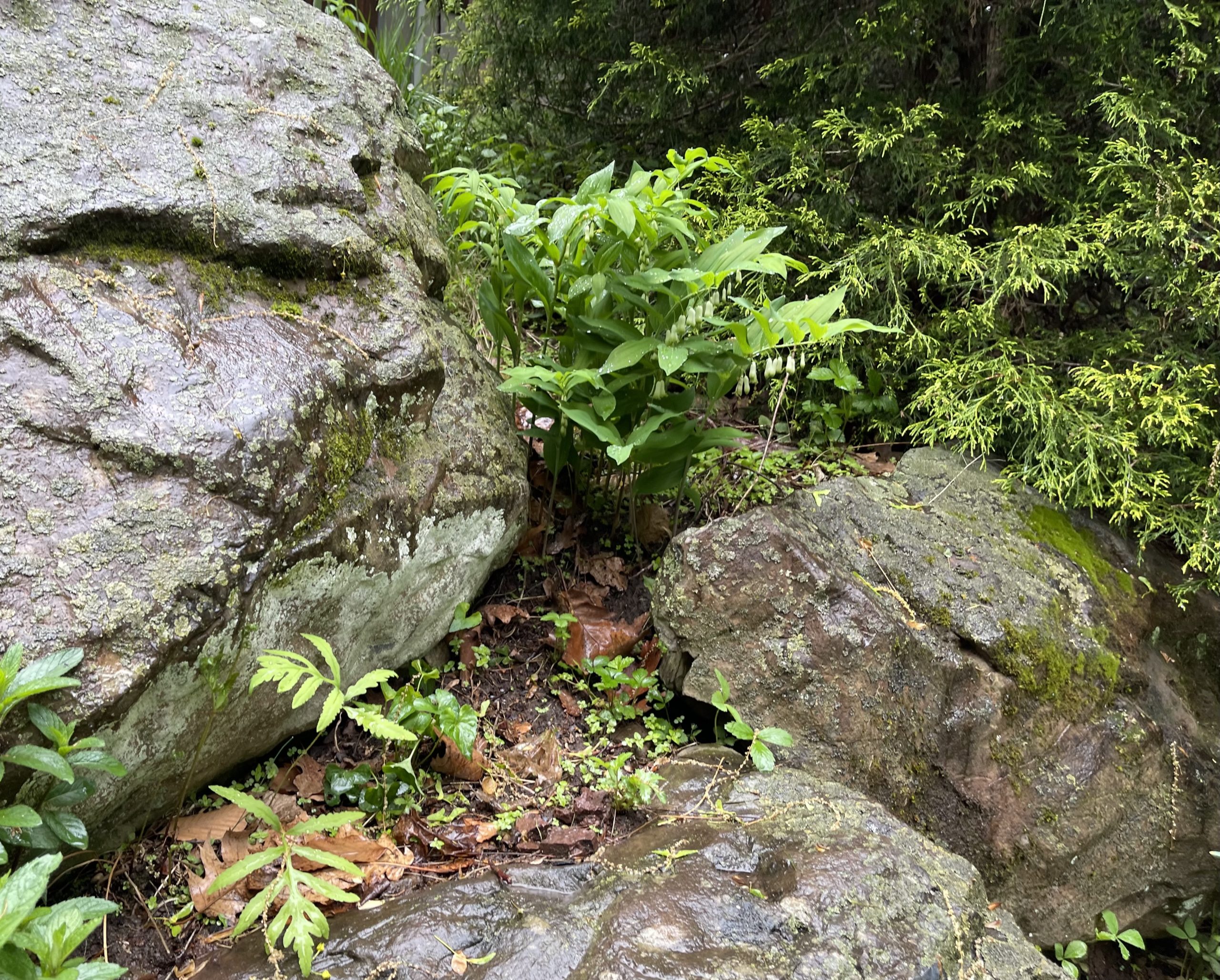
My goal is to create a landscape to complement our house, not primarily an ecological restoration or wildlife habitat. Ecology is an ethical imperative for me, but initially I set out to create emotional impact. In opposition to the degraded condition of the suburban landscape—as gardener Pat Sutton says “neat as a pin, ugly as sin?”—I hoped to recapture the magic of finding trilliums and ferns, milkweed and coneflowers in the forest and meadows behind my parents’ house by the Ice Glen in Stockbridge, Massachusetts.
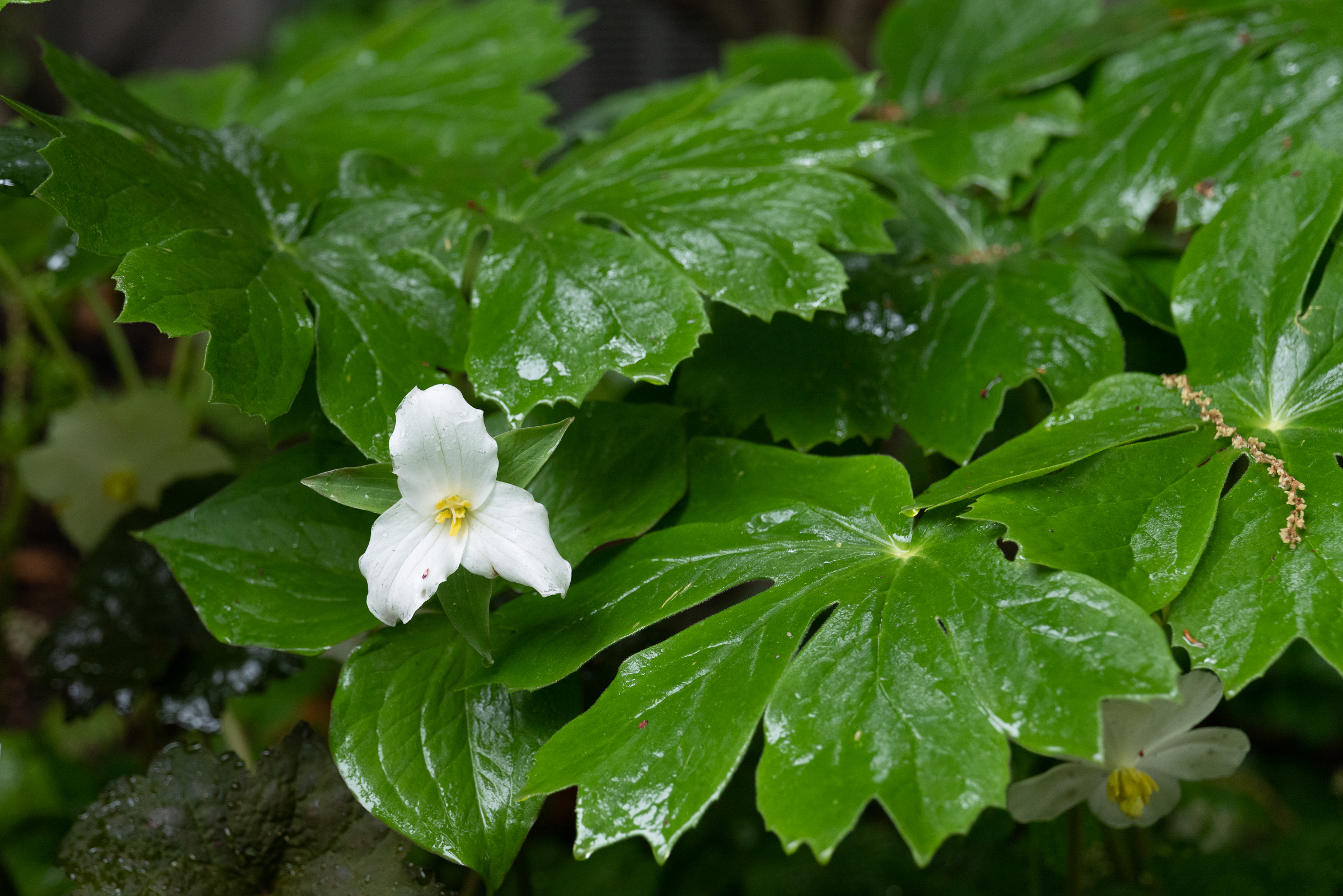
After some four years of work, the garden is getting there, maybe one quarter finished. While I have conceived of the garden as having year-round interest, from the spring into the early summer, the focus during this tour will be on the woodland ephemerals which bloom profusely in the spring. Later on, during the summer, fall, and winter, patches of meadow will remind us of the great interior of the continent and all it symbolizes. This could be seen as a journey from the Northeast into the interior, echoing the journey that early American settlers took in the eighteenth and nineteenth centuries. Or maybe, as the garden of an exile of Lithuania, the last country in Europe to be forced to stop its earth-centric religious practices, it could be seen as a passage of seasons, from spring to summer, from fern to grain.
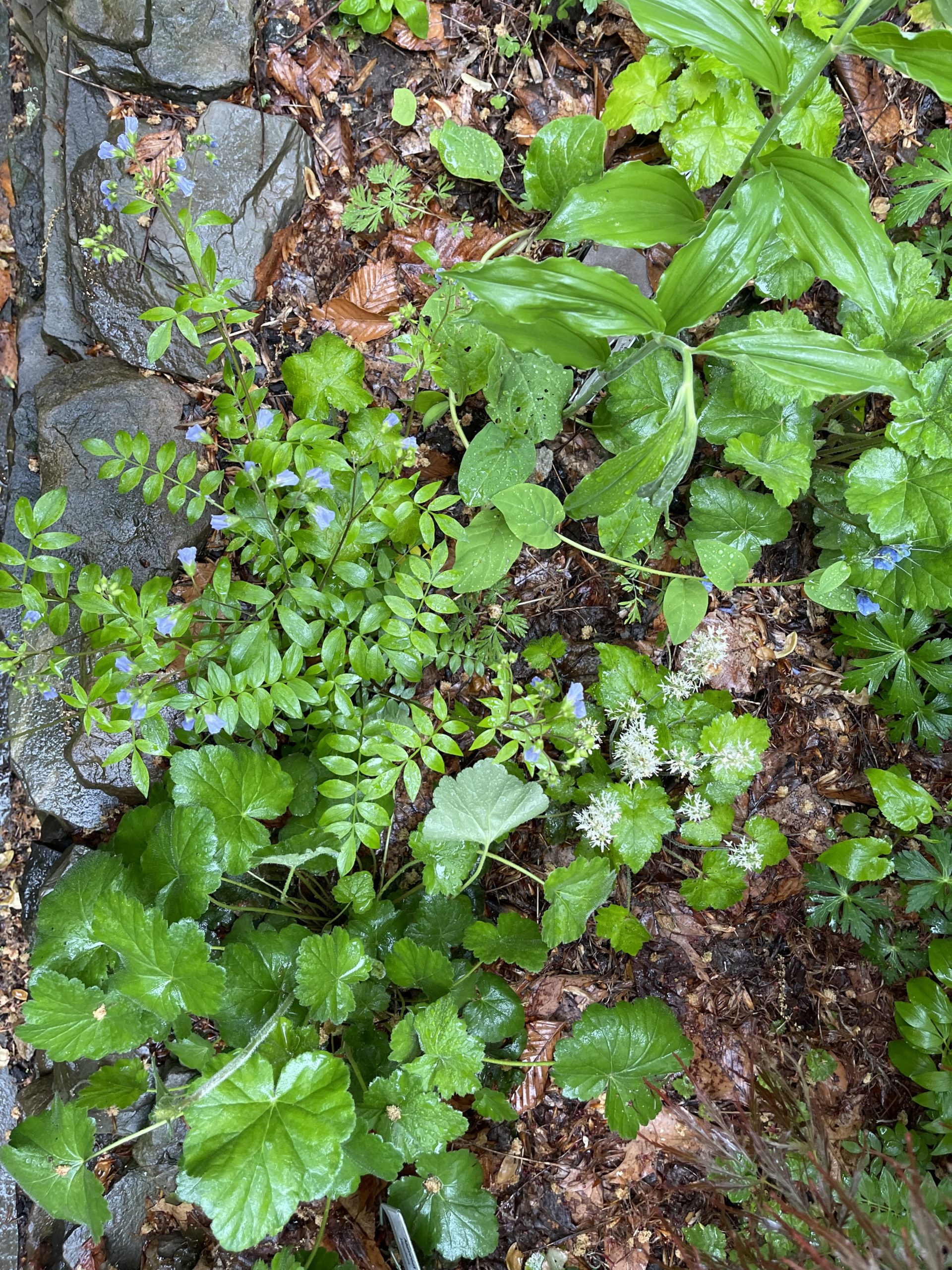
For architects, limitations are a frame to react against. I have planted plants native to New Jersey—and largely eschewed cultivars as well…these are usually tacky and don’t thrive well—to produce the effect I want while fulfilling the ethical imperative we have to be stewards to the land. Even so, the palette I have to work with is huge. Our state has over 2,000 native plant species as compared to 1,022 in Ireland, 1,625 in England and 1,460 in the Netherlands. Thus far, I have only planted some two hundred species of native plants here.
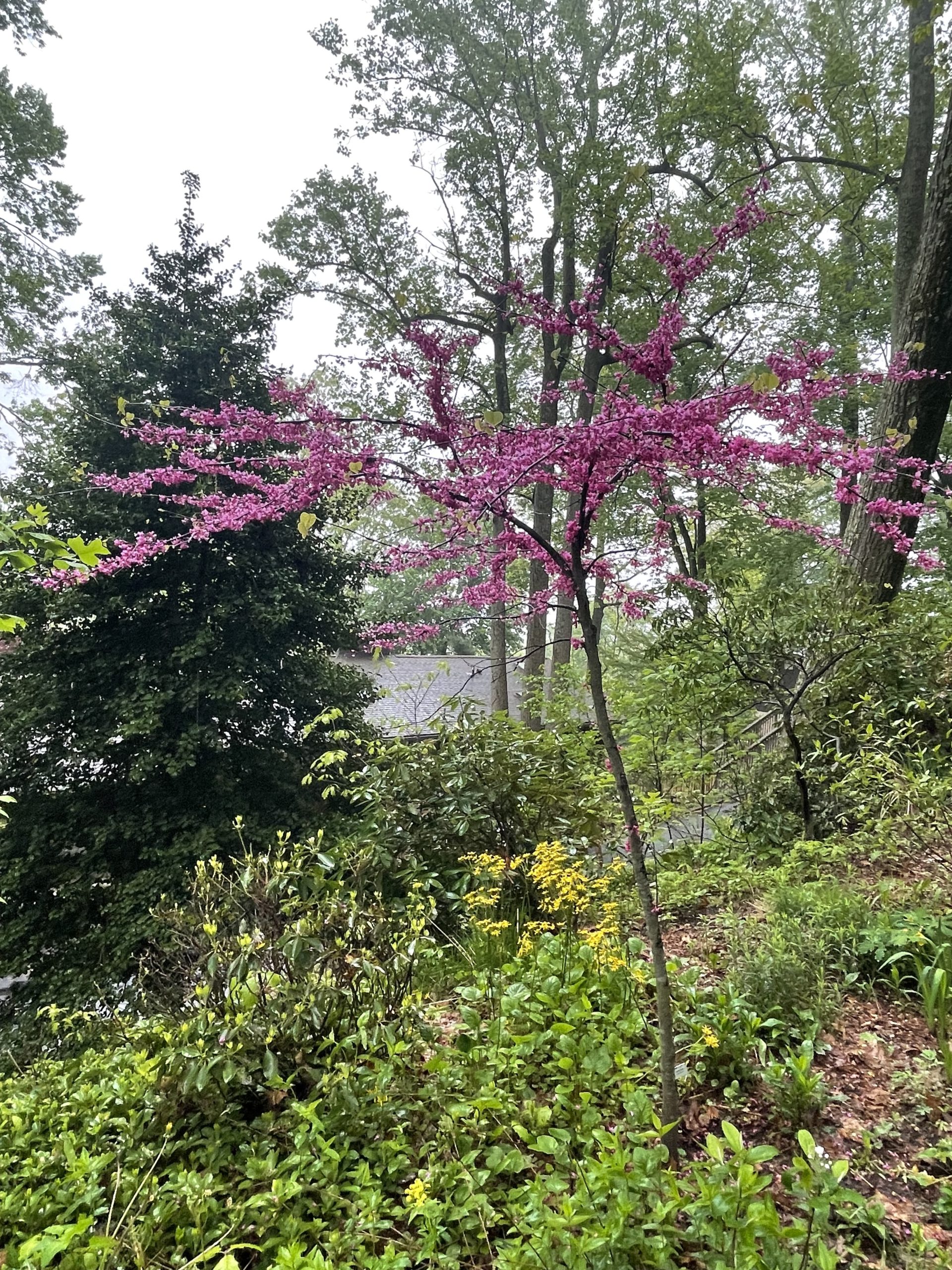
With all this variety, why bother with the tired, ugly, and often invasive solutions offered up by big box stores and worn-out garden centers? Why bother with any lawn that doesn’t have a function (our patch of lawn is used for outdoor parties and is slowly shrinking)? Nor is it necessary to resort to a weedy look. In Planting in a Post-Wild World, Thomas Rainer and Claudia West write: “If it is true that the next renaissance of human culture will be the reconstruction of the natural world in our cities and suburbs, then it will be the designers, not the politicians, who will lead this revolution. And plants will be at the center of it all.”
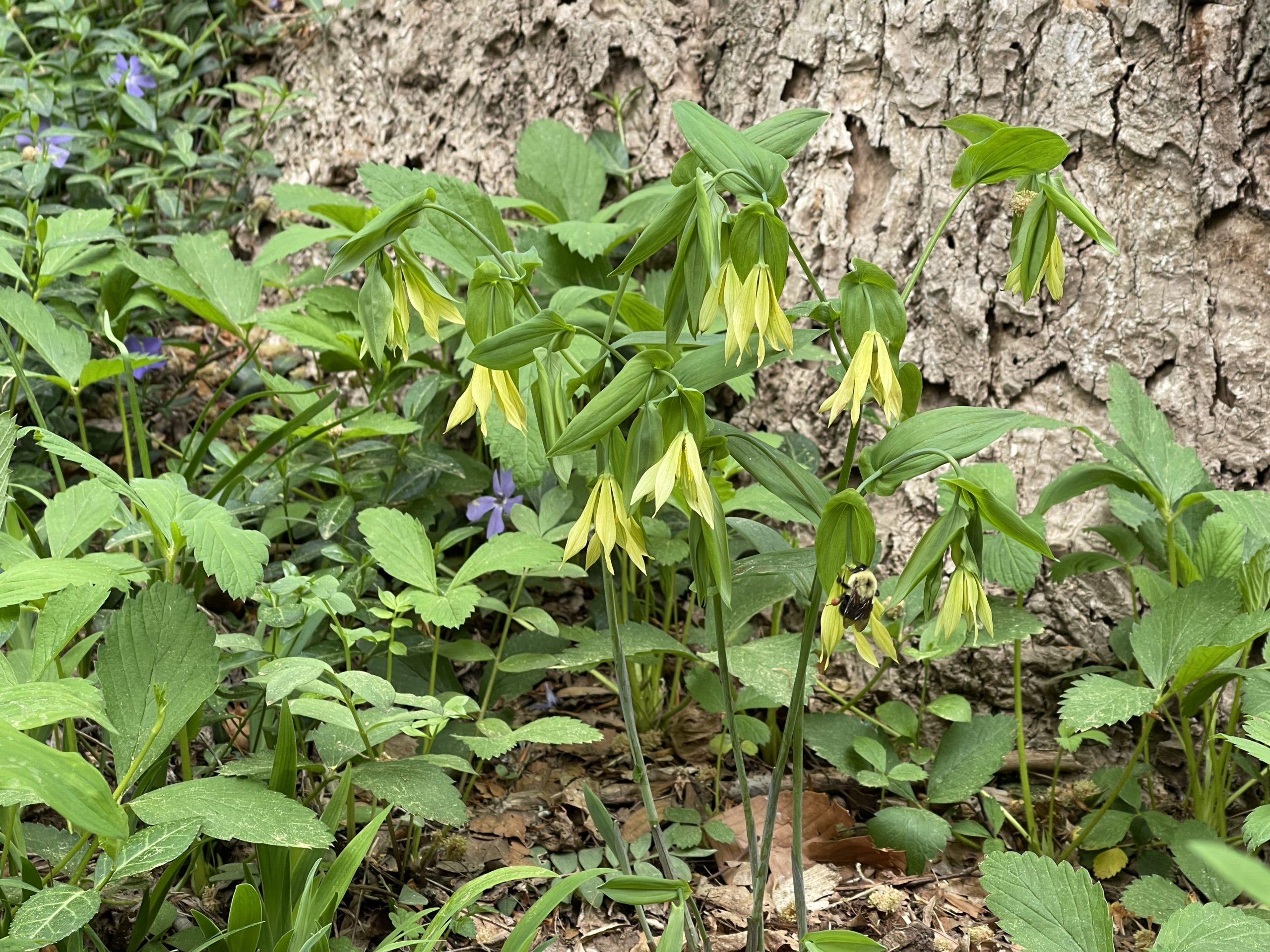
The two most remarkable American public gardens of the last twenty years, Piet Oudolf’s Lurie Garden in Chicago and High Line in New York are largely made with native plants. Garden designers in Great Britain, the Netherlands, and Germany eagerly make gardens exclusively with plants native to the United States because of the richness and wildness of what we have. What sort of madness is it that Europeans import American native plants for their gardens while we ignore gardening in favor of ugly, unused lawns, pincushion bushes, and have workers blow leaves out of woods with their infernal gas-powered leaf blowers, thus depriving trees of the mulch they need to thrive and dooming the ecosystem of the place?
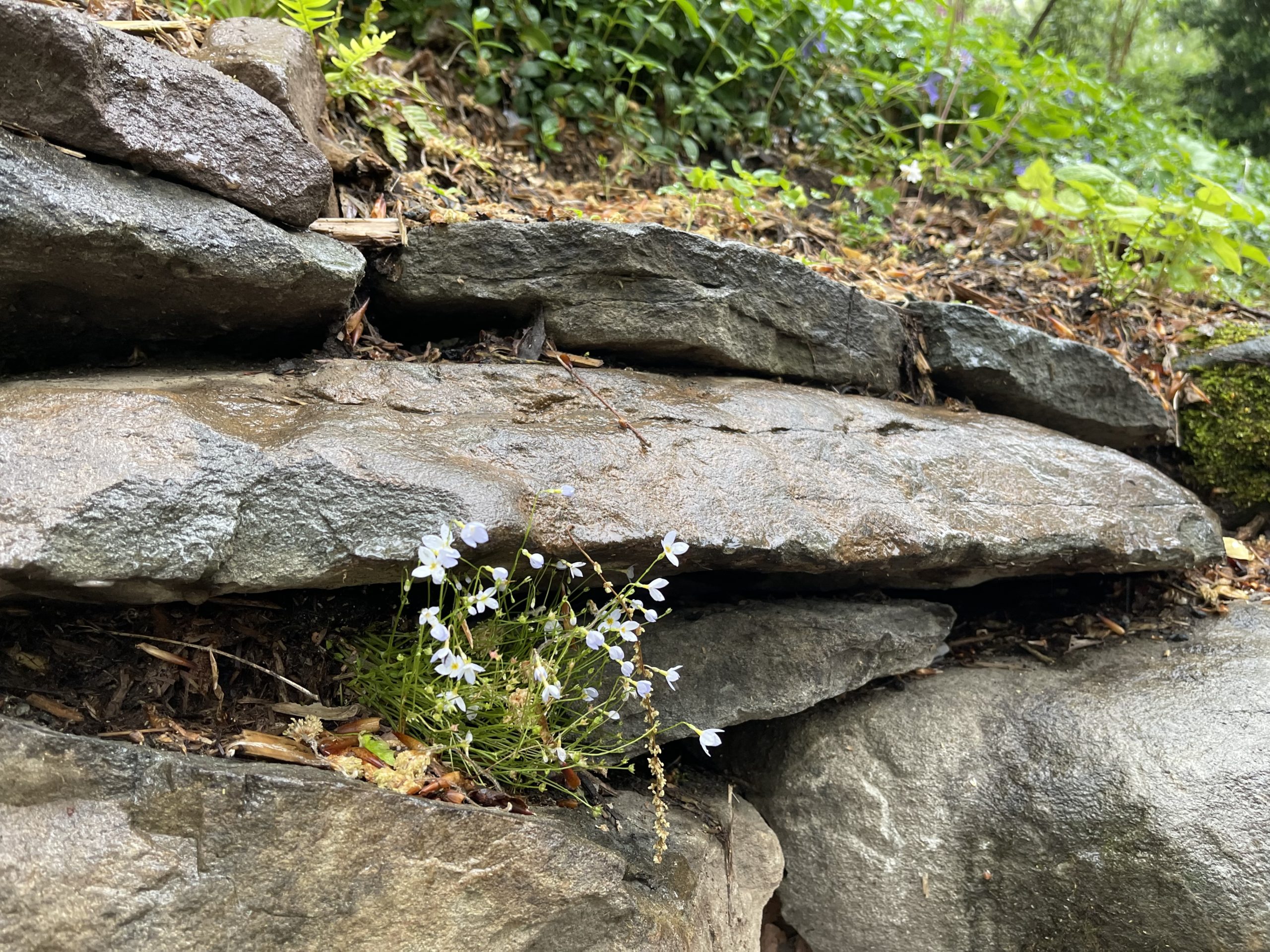
Unlike the Lurie Garden or the Highline, this project is done entirely without hired help. It has required both money (although a fraction of what it would take to have landscapers involved) and time (but this has been a joy, especially during our plague year). There are still plenty of remnants of the original contractor landscaping that accompanied the construction of the house. I don’t have the heart to cut down the dwarf Japanese red maple in front of the house or the larger Japanese red maple, Enkianthus and the two Kousa dogwoods in the back. Those can remain as specimen plants but I won’t plant any more non-natives. Invasive and overused groundcovers Vinca minor and Pachysandra terminalis still dominate much of the hill above the driveway, even as I slowly replace them with native plants.

With a half-acre of steeply sloped property rising fifty feet, it proves unfeasible to undertake total eradication and restoration overnight, so while keeping an overall vision for the entirety in mind, I have focused on individual areas. In these areas, I have tried to take an approach borrowed from Rainer and West, from Oudolf’s designs, and from James Golden’s groundbreaking garden at Federal Twist, which I visited a couple of years ago. Instead of the “plop a plant” approach, in which a plant is buried in mulch, I am out to create areas in which plants themselves are the mulch, preventing weeds from getting through by their sheer exuberance. Let them climb atop one another, let them compete. I want a riot of life. I’d rather edit out plants than add mulch, even when the plants are six inches tall instead of six feet tall (as at Federal Twist). Imported specimen plants plopped in mulch, surrounded by lawn nobody ever uses are a lazy aesthetic. Surely we can do better.
